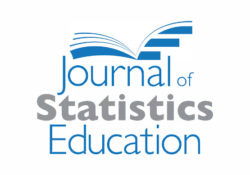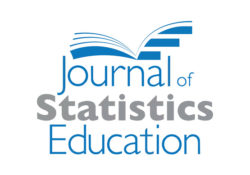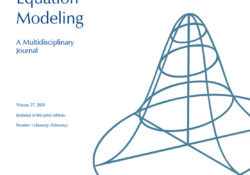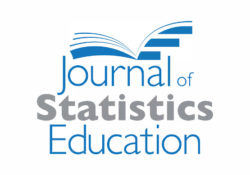eric.ed.gov har udgivet: Karabatsos and Walker (2011) introduced a new Bayesian nonparametric (BNP) regression model. Through analyses of real and simulated data, they showed that the BNP regression model outperforms other parametric and nonparametric regression models of common use, in terms of predictive accuracy of the outcome (dependent) variable. The other, outperformed, regression models include random-effects/hierarchical linear and generalized linear models, when the random effects were assumed to be normally-distributed (Laird & Ware, 1982; Breslow & Clayton 1993), and when the random effects were more generally modeled by a nonparametric, Dirichlet process (DP) mixture prior (Kleinman & Ibrahim, 1998a,1998b). The authors argue that the new Bayesian nonparametric (BNP) regression model provides a novel, richer, and more valid approach to causal inference, which allows the researcher to investigate how treatments causally… Continue Reading →
Like this:
Like Loading...
tandfonline.com har udgivet en rapport under søgningen “Teacher Education Mathematics”: Integrating Out Nuisance Parameters for Computationally More Efficient Bayesian Estimation – An Illustration and Tutorial Link til kilde
Like this:
Like Loading...
tandfonline.com har udgivet en rapport under søgningen “Teacher Education Mathematics”: Abstract Formulae display:?Mathematical formulae have been encoded as MathML and are displayed in this HTML version using MathJax in order to improve their display. Uncheck the box to turn MathJax off. This feature requires Javascript. Click on a formula to zoom. Abstract We present an active-learning strategy for undergraduates that applies Bayesian analysis to candy-covered chocolate m&m’s®. The exercise is best suited for small class sizes and tutorial settings, after students have been introduced to the concepts of Bayesian statistics. The exercise takes advantage of the nonuniform distribution of m&m’s® colors, and the difference in distributions made at two different factories. In this paper, we provide the intended learning outcomes, lesson plan and step-by-step guide for instruction, and open-source teaching… Continue Reading →
Like this:
Like Loading...
tandfonline.com har udgivet en rapport under søgningen “Teacher Education Mathematics”: Bayesian Versus Frequentist Estimation for Structural Equation Models in Small Sample Contexts: A Systematic Review Link til kilde
Like this:
Like Loading...

tandfonline.com har udgivet en rapport under søgningen “Teacher Education Mathematics”: Abstract Formulae display:?Mathematical formulae have been encoded as MathML and are displayed in this HTML version using MathJax in order to improve their display. Uncheck the box to turn MathJax off. This feature requires Javascript. Click on a formula to zoom. Abstract Bayesian statistics has gained great momentum since the computational developments of the 1990s. Gradually, advances in Bayesian methodology and software have made Bayesian techniques much more accessible to applied statisticians and, in turn, have potentially transformed Bayesian education at the undergraduate level. This article provides an overview of the various options for implementing Bayesian computational methods motivated to achieve particular learning outcomes. For each computational method, we propose activities and exercises, and discuss each method’s pedagogical advantages and… Continue Reading →
Like this:
Like Loading...
tandfonline.com har udgivet en rapport under søgningen “Teacher Education Mathematics”: Link til kilde
Like this:
Like Loading...
tandfonline.com har udgivet en rapport under søgningen “Teacher Education Mathematics”: Abstract Formulae display:?Mathematical formulae have been encoded as MathML and are displayed in this HTML version using MathJax in order to improve their display. Uncheck the box to turn MathJax off. This feature requires Javascript. Click on a formula to zoom. Abstract While computing has become an important part of the statistics field, course offerings are still influenced by a legacy of mathematically centric thinking. Due to this legacy, Bayesian ideas are not required for undergraduate degrees and have largely been taught at the graduate level; however, with recent advances in software and emphasis on computational thinking, Bayesian ideas are more accessible. Statistics curricula need to continue to evolve and students at all levels should be taught Bayesian thinking. This… Continue Reading →
Like this:
Like Loading...

tandfonline.com har udgivet en rapport under søgningen “Teacher Education Mathematics”: Abstract Abstract We propose a semester-long Bayesian statistics course for undergraduate students with calculus and probability background. We cultivate students’ Bayesian thinking with Bayesian methods applied to real data problems. We leverage modern Bayesian computing techniques not only for implementing Bayesian methods, but also to deepen students’ understanding of the methods. Collaborative case studies further enrich students’ learning and provide experience to solve open-ended applied problems. The course has an emphasis on undergraduate research, where accessible academic journal articles are read, discussed, and critiqued in class. With increased confidence and familiarity, students take the challenge of reading, implementing, and sometimes extending methods in journal articles for their course projects. Supplementary materials for this article are available online. Link til kilde
Like this:
Like Loading...






